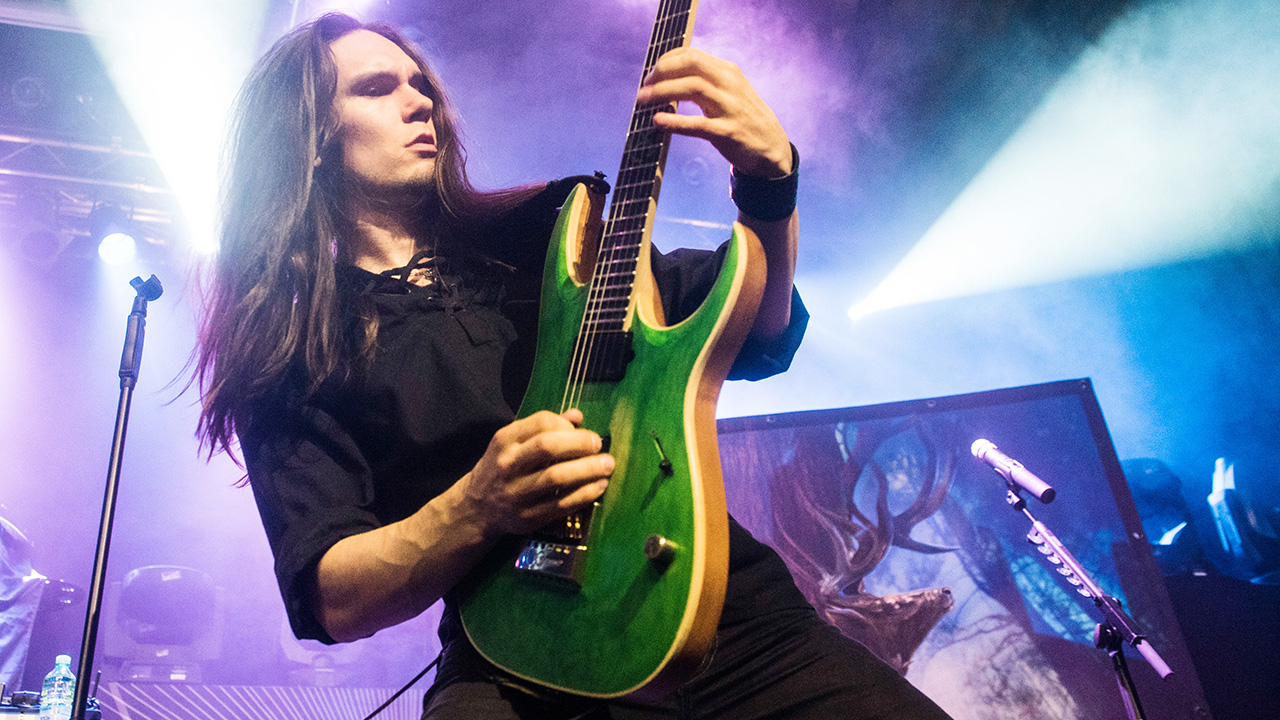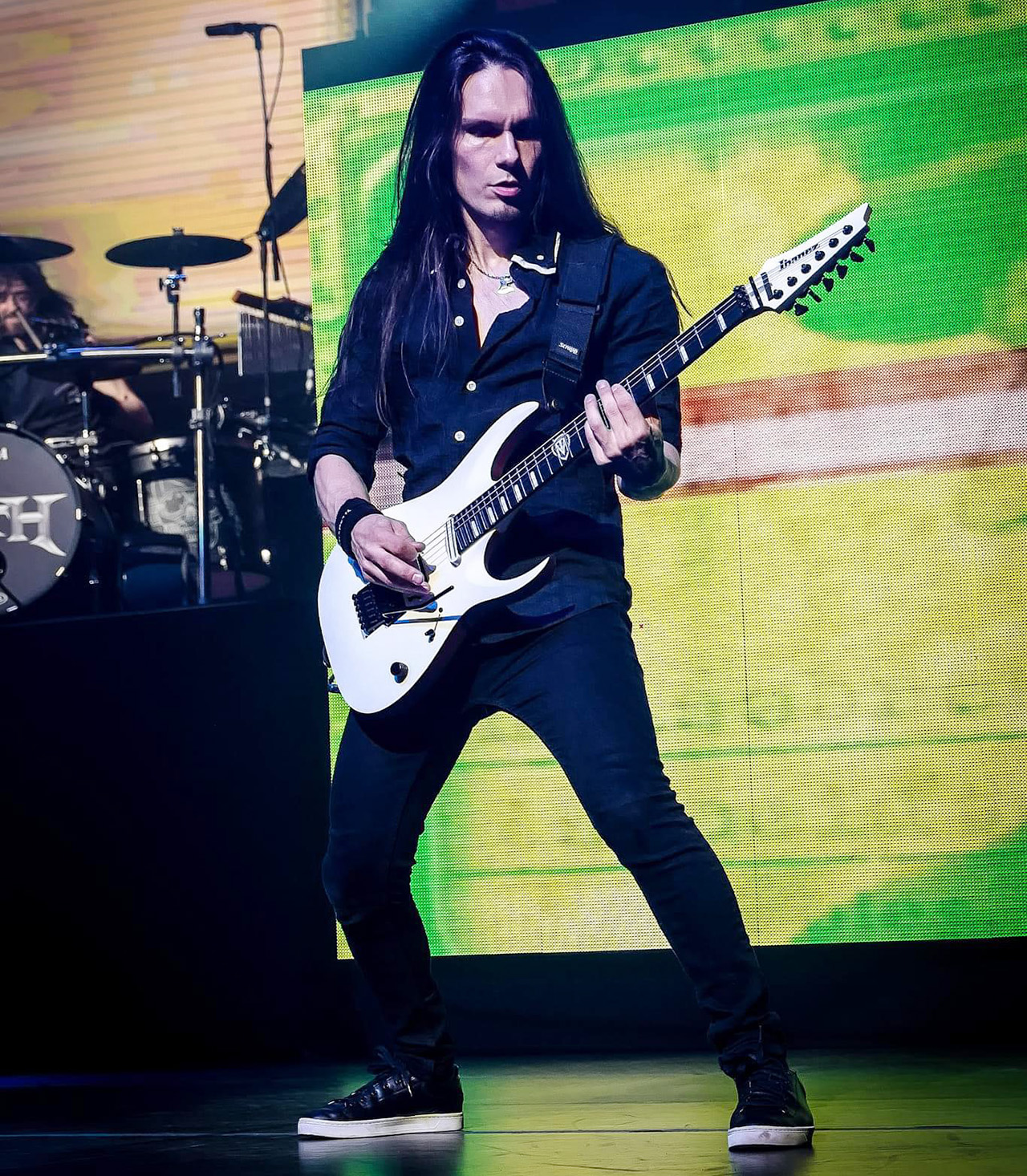
No-one was surprised when Kiko Loureiro’s absence from Megadeth turned from temporary to permanent. After all, this is a band that’s featured upwards of a dozen guitarists since 1983 – it’s not as if lineup stability has been a thing.
Still, Loureiro was a fan favorite. He’d been in Megadeth for nine years and had lent his virtuosic playing to well-loved records Dystopia (2016) and The Sick, The Dying… And The Dead! (2022). For some, he even rivaled the iconic Marty Friedman.
Losing Loureiro wasn’t ideal, and it was especially tricky for Dave Mustaine, who, at times, had championed him as the best guitarist Megadeth had ever employed. Perhaps that’s why Loureiro took it upon himself to select his replacement.
“Dave is the commander, right?” he told Guitar World in January. “I told him, ‘You choose the guitarist, and I’ll help them however I can. But it wasn’t happening, so I took the first step and made a list of guitarists, and Teemu was on that list.
“I had heard good things and seen some videos, and the fact that he was in Europe and could easily travel to the part of the European tour helped. I presented the idea to Dave, and he agreed.”
It’s been so far so good for the 37-year-old Finnish guitarist Mäntysaari, who’s previously crushed skulls with Wintersun, Imperanon and Smackbound, and has now cozied up alongside Mustaine, bassist James LoMenzo and drummer Dirk Verbeuren.
And while Loureiro’s popularity rivaled that of Friedman, Mäntysaari’s style is said to be closer to that of the man who penned the iconic solos heard across Rust in Peace and Countdown to Extinction.
Things seem to be going so well that new music is afoot. “There’s been talks of pre-production for the next album,” Mäntysaari says. “I’m excited to hopefully bring my spice to the Megadeth soup.”
The momentum, and how fast-paced it’s been, has allowed me to concentrate on getting my work done… there wasn’t much time to be nervous
That’s energizing news – but if we know one thing about Megadeth, it’s to expect the unexpected. “The band has such a cool history across all its albums,” Mäntysaari says. “I know there are expectations, and you can’t please everybody, but there’s a really good continuum from the last two albums. I don’t know exactly, but I think we’ll maybe look to get back to the roots.
“Maybe you’ll hear some Rust in Peace vibes, or maybe some things like the last two. Either way, the direction Megadeth is going now is good, and the vibe within the band seems to be in a very good place.”
He continues: “I’m very open to immersing myself in the experience of writing with the band and getting in the studio. I’m looking forward to jamming old-school style and seeing what comes. There haven’t been detailed talks but I think we’ll start working on ideas after we get together for the tour. I’m honored to be a part of this process.”
What led to getting the call to join Megadeth?
“I was doing some shows with my other band, Smackbound. I got a call from Kiko Loureiro, who explained the situation and asked if I’d possibly be available for some touring in the fall of 2023. I was immediately very excited and said, ‘Yeah, I’m available.’ He asked if I could record some video clips as an audition to send to management to check out my playing, and I did. Things progressed from there.”
Were there any nerves involved, considering you were stepping into a situation involving a massive band?
“The legacy of Megadeth is huge – of course, I never thought something like this would happen to me. But at the same time, I’ve always felt like being prepared was important in case a big band like this did call me.
“I have a specific skillset where I can learn fast, jump into new situations and be comfortable. I’ve always liked doing that; I love teaching, and I’ve been on many cover projects, so being detail-oriented is part of my skillset.”
It seems safe to say that you were a fan going into this.
“Megadeth was always kind of there in the background for me. I was very aware of the band – they’re one of the biggest metal bands in existence. So, of course, when they called me up, it was a bit surreal.
“But from the first phone call with Dave, they were so welcoming. He even said, ‘I really liked your audition,’ meaning the videos he saw. The momentum from that, and how fast-paced it’s been, has allowed me to concentrate on getting my work done, so there wasn’t much time to be nervous.”

What types of tips and tricks did Dave give you?
“Dave is very detail-oriented. I learned the songs by ear and from some tips Kiko gave me. Kiko showed me how things work within the band and gave me some tips, but I’ve worked mainly with Dave.
“I’d have Zoom meetings with Dave, go through the riffs, and look at the small details of how they groove, the moods, and the technical side. We talked a lot about what Dave wants to project, picking directions, being very aware of down-picking, alternate picking, and, in many of the songs, being aware of both.
“We also talked about things like dampening, the flow of songs, creating contrast, hand positions, and trying to get things right fingering-wise, all of which I enjoy doing. There’s a bit of detective work involved, and to get that information from the source in Dave was amazing.”
The amp Kiko was playing was modeled from my physical Friedman amp that I loaned to the Neural DSP guys years back
A big part of your role is centered around locking in with Dave. What are some of the things you admire about him as a guitarist?
“Dave is a very confident guitarist. He has a great sense of rhythm and his tone is great. As a writer, he’s a master of both riffs and solos. He chooses special types of notes, uses cool techniques, and all these very interesting tapping parts.
“There’s a lot of groundbreaking stuff; to think he came up with a lot of it in the ‘80s and how influential he’s been is crazy. We still feel that influence even today.”
You mentioned that Kiko imparted some wisdom to you, too.
“Kiko was fantastic about welcoming me and training me, and the idea was that he’d maybe spend a little more time so Dave didn’t have to do too much. But it turned out that Dave wanted to do more, so I learned a lot of the practical stuff about being in the Megadeth machine from Kiko. There are a lot of moving parts, and it takes time to adapt to, so Kiko was very helpful with that.”
Did Kiko leave you with any of his gear or Quad Cortex presets?
“Kiko was open to offering his gear and guitars, but I wanted to bring my own because they’re a little different than what Kiko uses, though we both play Ibanez. I had my own guitars, as I’m used to, but I used a lot of Kiko’s stuff because it was easier, and we wouldn’t have to change much. I ended up putting DiMarzio pickups in my guitars to keep things smooth, since that’s what Kiko was using.”
Will you be integrating more of your gear into the mix in the future?
“We may try different things for the next tour and mess with the presets. My touch and pick attack slightly differ from Kiko’s, and even my overall guitar sound differs. We’ll tweak the presets, but the setup won’t be too different.
“Once it was clear that Kiko was not returning, my ideas for updating the rig became more welcomed, so we’re talking about trying some new things for the next tour. I’m a gear nerd, and I’m in the position of having a lot of companies who are now interested in being involved, so there are a lot of possibilities.”
After playing the songs for a while, you start to feel like you could have come up with something similar yourself. The songs almost become yours in a way
Can you shed some light on what specifically you’ll experimenting with?
“We’ll stay with the Quad Cortex as I have a good relationship with the Neural DSP guys. They’re from Helsinki, and I’ve known them for a long time. One funny thing is the amp that Kiko was playing was modeled from my physical Friedman amp that I loaned to the Neural DSP guys years back.
“But we may try a different power amp and tweak a few things with the guitars as far as modifications go. It’s a long process, but more doors are opening, and I hope that, at some point, I can do something like a signature pickup; that would be cool.”

Which songs have been the most challenging thus far?
“Every song has details where, once you pick up a guitar and begin learning, you discover nuances you didn’t know. The style of Megadeth is where I’ve been coming from for a long time, so there’s a lot of familiarity. But there’s always room for improvement in terms of vibrato and intonation; it’s an ongoing process.
“As far as the touches, I’d say Hanger 18 because there are so many little solos – but it’s one of my favorites. Another is Holy Wars… The Punishment Due. It was a tough one that was very cool to learn. It’s a complex song for the riffs, and so is Tornado of Souls, which also has a legendary solo. I spent a lot of extra time getting the muscle memory and the details down for those.”
That’s got to be tough, considering so many different players have come and gone in Megadeth.
Chris Poland was a guy I’d never tried learning, so to dive in and discover he was very into Allan Holdsworth – like me – was very cool
“Yeah, but even though somebody else composed the parts, after playing the songs for a while, you start to feel like you could have come up with something similar yourself. The songs almost become yours in a way.
“That’s not to take anything away from anyone else; a song like Tornado of Souls is an absolute Marty Friedman masterpiece. That’s an example of a solo where I try to replicate it because, as a fan, I would love to hear that as it appears on the album.
“Depending on the situation, you can get away with making something your own – but I think every Megadeth guitarist has gone with the strategy of playing the solos as they’re intended and then carefully throwing in their own spice here and there.”
Is there a Megadeth guitarist you identify with most?
“I’m very honored to be in the band and part of the great legacy of guitarists before me. I’m more familiar with some of them than others, but I had to dive deeply into everyone’s style by learning the songs.
“Chris Poland was a guy I’d never tried learning, so to dive in and discover where he was coming from and that he was very into Allan Holdsworth – like me – was very cool. Hearing Chris’s isolated tracks was incredible, as was learning his stuff.
“But I’d say Marty Friedman is the one I’ve studied the most. People probably hear him in my style. I always loved his exotic bends, surprising note choices, phrasing and cool vibrato.
“I’ve also always loved Kiko. He brought his own spice to Megadeth while staying true to the legacy and sound of the band. It’s been incredible to take all that in.”
- Megadeth tour South America and Europe in 2024 – see Megadeth.com for full dates.







